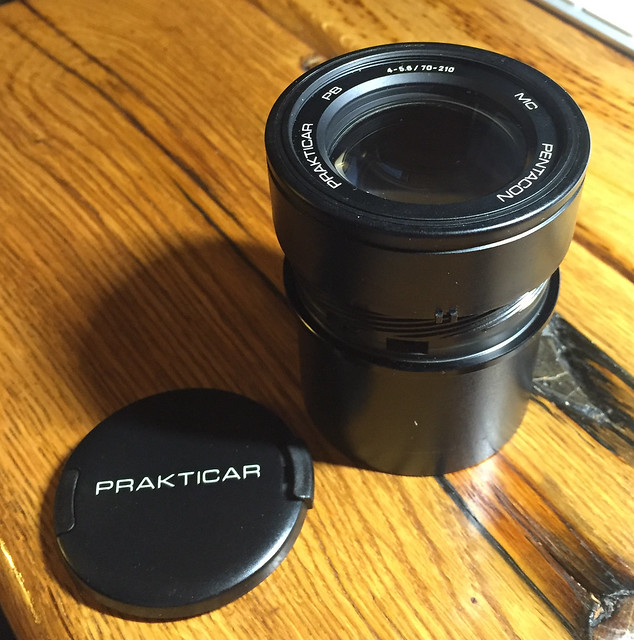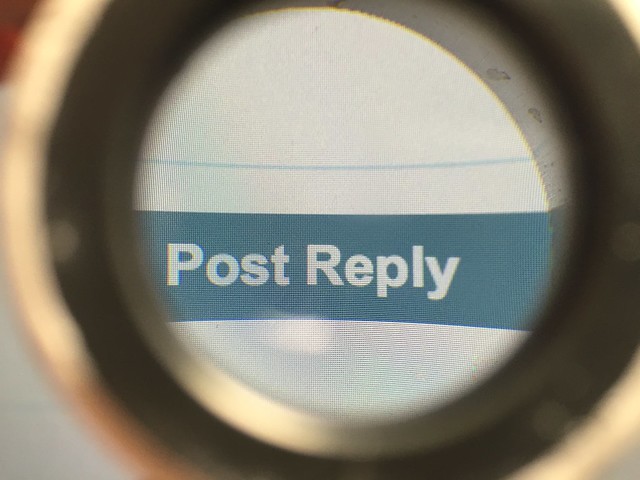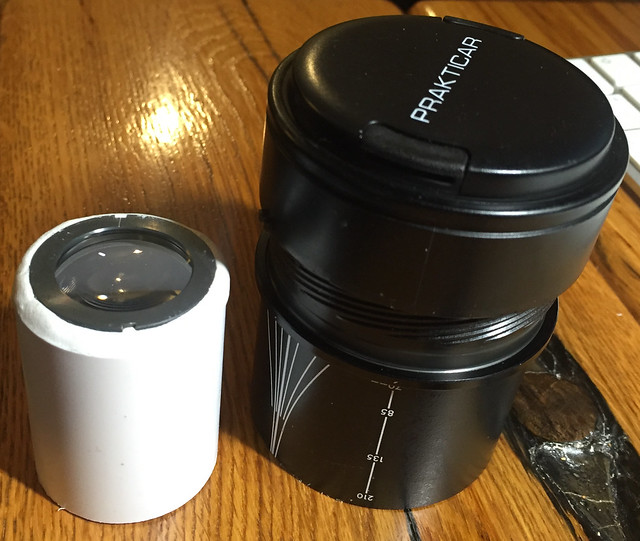Thanks
@Andysnap, I have looked at the Chroma a few times,
after the goings-on in the other thread I am just weighing up options really and wondering if this is a slippery slope I want to get involved with.
I find the picture taking mindset to be quite similar between medium format and large format, in the sense that they're both tripod-based and I take a more considered approach. (Talking about a MF SLR setup rather than a folder or other hand-held type.) Overall, MF is a bit quicker when going from deciding to take a photo, to having done so and packing the gear up before moving on, but both are much slower than using a 35mm camera. In other words, in the wider context, MF and LF can be pretty similar types of photography. If trying to choose between one or the other, it's maybe more down to the detailed differences...
MF is probably a bit cheaper to get started with, but potentially not by much. The typical Bronica ETRS (body, 75mm lens, waist level finder, one film magazine) comes in at the thick end of £300, while LF tends to be a bit more if a view camera is the basis: maybe £250 for the body, £100 on a lens, add a couple of film holders and a cheap loupe - getting on for £400. Possible to spend much more, of course, and being system-based equipment, even the cheaper starting gear tends to be added to as time goes on (lenses, filters, film magazines/holders). For B&W, cost of film can range from pretty similar per shot to a bit more for LF, but lab processing is much higher for LF - about £5 per shot for 5x4. LF colour film is much more expensive to buy, per shot, than 120, while lab processing costs remain about the same. Much cheaper if you process yourself, but that also takes some investment - 5x4 tanks tend to cost more (and most 35mm users who already develop will likely have a tank that can do 120). And 5x4 loading tends to be easier in a changing tent rather than a changing bag (too cramped - fabric gets in the way).
Another difference to consider is the weight and bulk. My fairly comprehensive MF kit is smaller and lighter than the LF kit, although not by a great deal. However, it could be cut down to very light if I wanted (eg, one lens instead of four). Harder to cut the LF kit down by much - the camera is simply heavier and much bigger, the lens needs to be separate if the camera doesn't fold with it fitted, and still need some film holders and a dark cloth. A bare bones MF camera can be a self-contained unit, while LF is probably still a bag of bits.
Handling of the actual film differs. Loading LF means dark tent and faffing with a box of sheets, but they're easy to handle when scanning - they stay rigid and flat. MF is easier to load and can be done in daylight, but I struggle to get flat negs in the scanner's carrier.
LF certainly has better image quality. For a given film stock, 5x4 compared to 645 has double the resolving power for a given subject and field of view: twice as wide, twice as tall, but grain stays the same size, so a given size of final image in LF has grain that is half the apparent size it would have in MF. However, in practical terms, it's neither here nor there unless you're printing very large - for practical image sizes, MF is already up on the plateeu.
If anything, the main thing that LF offers is the movements. Add-ons or special lenses can be had for MF, but they're expensive and not all systems have them. Moreover, most LF cameras will offer more movements than the MF equivalents. If you wanted movements, it might be cheaper overall to go LF. Movements do have their uses, although how essential they are can depend on the subject. Not used so much in landscape (or less extreme), but can be very handy for things like architecture.
There are also subtle differences in the lenses. For a give field of view, a longer focal length is used in LF, which means a shallower depth of field for a given aperture. It also means that you can stop down more before diffraction has an adverse effect on sharpness, and most LF lenses stop down further than MF lenses (f45 is common). They also tend to have smaller maximum apertures (f5.6 to f8, mostly).
These are practical considerations. If anything, the movements available in most LF cameras is a unique selling point - other formats might have movements, but they're not as comprehensive. Image quality might be a factor, although I tend to the view that they can both be extremely good, to the extent that it's not a major thing. To my mind, the rest are really just a bunch of pros and cons - differences in handling, costs, etc - where one or the other might dominate depending on what's important to the individual.
There are also the less practical considerations. Although I find the use of either format (on a tripod, for outdoor subjects) quite similar, I do find LF more absorbing as a picture taking experience - more goes into making each shot - there's a lot more involvement with the subject and how it's to be represented on the film. There's also an ephemeral aspect going on - LF is basically an old-fashioned plate camera with flexible plates instead of glass, and there's a feeling of engaging in a more traditional kind of photography.
I'll happily use either system, but if I had to choose one, it would be LF, mainly for the movements and that ephemeral, traditional vibe. What you might choose can differ, of course, depending on where your inclinations lie.


 Untitled
Untitled Untitled
Untitled Untitled
Untitled Untitled
Untitled Untitled
Untitled Untitled
Untitled